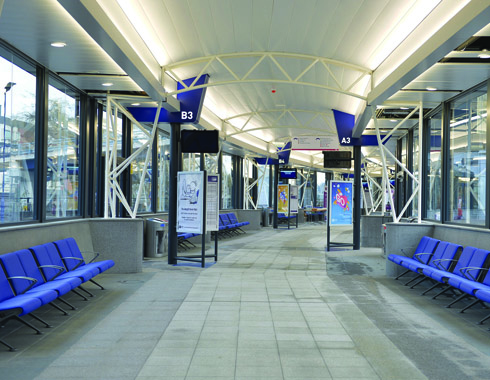Retro-commissioning is a process devised to help bring older buildings meet the latest efficiency standards and lower running costs, while extending the service life of existing equipment.
It can be particularly relevant and useful in locations where Heating Ventilation and Air Conditioning (HVAC) systems are installed.
What exactly is retro-commissioning, and why is it important?
Retro-commissioning is a process devised to help bring older buildings meet the latest efficiency standards and lower running costs, while extending the service life of existing equipment.
It can be particularly relevant and useful in locations where Heating Ventilation and Air Conditioning (HVAC) systems are installed.
What exactly is retro-commissioning, and why is it important?
What is retro-commissioning?
As summarised above, a simple explainer for retro-commissioning is the means by which the performance of an existing building’s systems, such as HVAC, and any associated equipment is assessed.
The objective is to check for deficiencies, while at the same time identifying opportunities for an owner to reduce costs or improve efficiency.
Retro-commissioning can often highlight problems that occurred during the initial design or construction stages.
Issues that have developed since can also be addressed.
For example, as equipment ages it may work less efficiently, can break down, or even become obsolete.
A building’s use can also change several times over its lifetime, obliging updates to the original mechanical, electrical or control systems.
A thorough retro-commissioning exercise can help overcome many of these challenges.
It involves an evaluation of how the existing systems are functioning, looking in particular at energy efficiency, before using those findings to suggest where or how any improvements can be made.
What kind of problems might retro-commissioning fix?
Retro-commissioning will take a comprehensive look at how a system operates, and how it might be improved.
The type of problem that retro-commissioning will typically identify and fix includes:
- Equipment that is in operation when it isn’t needed
- Systems that simultaneously heat and cool
- Valves and belts that aren’t functioning properly
- Sensors and thermostats that aren’t properly calibrated
- Air balancing systems that are inefficient or less than optimal
- Control sequences that aren’t functioning as they should be
Most of these are small operations that will cost very little to change but can have a significant impact on how the system operates as a whole.
Why is retro-commissioning important?
Inefficient buildings with installations such as HVAC are more costly to run, and those systems are prone to break down and fail.
They may also no longer meet the latest regulatory requirements and, in many cases, the systems that are installed could be obsolete or even dangerous.
Retro-commissioning adopts a thorough approach, delivering a range of benefits for a building’s owners as well as those who use it – no matter if they are employees or members of the public.
First, there is energy consumption.
Retro-commissioning ensures that an HVAC system is operating at its optimum to maximise efficiency.
This can have a considerable impact on its running costs over time.
Inefficient HVAC systems are costly to run and don’t deliver benefits in terms of temperature and comfort that you would expect.
This, in turn, makes a building less comfortable to use and risks impacting productivity.
In some cases, it can even increase staff turnover because employees are exposed to uncomfortably hot or cold temperatures over time.
Retro-commissioning locates, and then corrects, any issues with the operation of an HVAC system that compromises its efficiency.
Older buildings will frequently undergo changes of use.
For example, a hotel may be converted into a gym or a factory unit into office space.
When this happens, the original HVAC system may be inappropriate.
Change of use may also incorporate amendments to the layout of a building as well as structural alterations.
Parts of the system may be deemed redundant or superfluous, no longer serving the needs of the building and those that use it.
Retro-commissioning will check that all of the component parts of an HVAC system are operating correctly, and are likely to continue doing so.
New parts may be fitted, and amendments made to how aspects of the system operates to ensure that everything is working effectively.
The process is designed to identify obvious signs of wear and tear in addition to checking for indications of future problems.
Faulty controls or poorly-calibrated thermostats and sensors may be adjusted or replaced.
Ultimately, retro-commissioning will reduce the likelihood of costly and inconvenient breakdowns.
It will ensure your HVAC system is working effectively, reflects the current usage of the building, and can be relied upon.
Speak to us about Retro-Commissioning
Retro-commissioning services you can trust
Since it was founded in 2008, ECS Yorkshire has established itself as one of the UK’s most trusted and respected HVAC commissioning providers.
To find out more about how retro-commissioning can drive down your HVAC running costs, call us today on 01535 600688 or send an email to info@ecs-yorkshire.co.uk.

